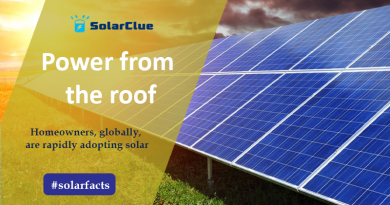On-Grid Solar Incentives: Boosting Adoption with Financial Benefits
Connecting an on-grid solar system is a great way to harness clean, renewable energy and reduce your dependence on the grid. With the advancement in technology and the decreasing cost of solar panels, on-grid solar systems have become an increasingly popular option for homeowners and businesses. If you’re considering installing an on-grid solar system, this blog will guide you through the process of connecting it to the grid, ensuring a seamless integration that maximizes your energy savings.
Understanding an On-Grid Solar System
Before diving into the details of connecting an on-grid solar system, let’s briefly clarify what it entails. An on-grid solar system, also known as a grid-tied system, is connected to your local electric utility grid. It consists of solar panels, an inverter, and a bi-directional meter. The solar panels convert sunlight into DC (direct current) electricity, which is then converted into AC (alternating current) electricity by the inverter—this is the type of electricity used in most homes and businesses. The bi-directional meter measures the electricity you consume from the grid, as well as the excess electricity your solar system sends back to the grid.
1. Assess Your Energy Needs
The first step in connecting an on-grid solar system is to assess your energy needs. Start by examining your electricity bills to determine your average monthly consumption. This will help you determine the size and capacity of the solar system you need. Consider factors such as the available roof space or ground area for the solar panels and the local weather conditions to estimate the potential solar energy generation.
2. Obtain Necessary Permits
Before connecting your on-grid solar system, ensure that you comply with all the necessary permits and regulations in your area. Contact your local building department or energy authority to obtain the required permits and approvals. These permits typically involve inspections, ensuring that your installation meets safety standards and follows the electrical and building codes.
3. Choose the Right Solar Panels
Selecting the right solar panels for your on-grid system is crucial for optimizing its performance and efficiency. Look for panels with a high wattage output per square foot and a good temperature coefficient—the lower the temperature coefficient, the better the panels perform in hot climates. It’s also worth considering the warranty offered by the manufacturer. Generally, photovoltaic panels come with a warranty ranging from 20 to 25 years, ensuring their longevity.
4. Install the Mounting Structure and Solar Panels
Once you have your permits and the appropriate solar panels, it’s time to install the mounting structure and solar panels. The roof is the most common location for solar panels, but ground mounts are also an option if you have ample space. It’s important to ensure that the solar panels are tilted at the correct angle and direction to maximize their exposure to sunlight.
5. Connect the Inverter
The inverter is a crucial component of an on-grid solar system as it converts the DC electricity generated by the solar panels into AC electricity that can be used in your home or business. Choose an inverter that matches the capacity of your solar panels and has the necessary grid tie-in capabilities. Ensure that the inverter is installed in a cool and ventilated area to prevent overheating.
6. Tie-in to the Grid
To connect your on-grid solar system to the grid, you’ll need professional assistance from a qualified electrician. This step involves safely connecting the inverter to your electrical service panel and installing a bi-directional meter. The electrician will ensure that the solar system is properly grounded and meets all the safety requirements. It’s essential never to attempt this step on your own, as it involves working with high voltages and can pose safety hazards.
7. Monitoring and Maintenance
Once your on-grid solar system is connected to the grid, it’s important to regularly monitor its performance. Most modern systems come with online monitoring capabilities that allow you to track the real-time energy production and consumption. This data will help you identify any issues or inefficiencies, enabling you to take corrective measures promptly. Additionally, periodic maintenance, such as cleaning the solar panels and ensuring that all connections are secure, will optimize the system’s performance.
Conclusion
Connecting an on-grid solar system requires careful planning and professional assistance to ensure a safe and effective integration with the grid. By assessing your energy needs, obtaining the necessary permits, choosing the right solar panels, and following the proper installation and tie-in procedures, you can enjoy the numerous benefits of clean energy while reducing your dependence on traditional power sources. Regular monitoring and maintenance will help you maximize the system’s efficiency and prolong its lifespan. As solar technology continues to improve, on-grid solar systems will undoubtedly play an increasingly significant role in our efforts to build a sustainable future.
Ready to harness the power of solar incentives? Explore your financial benefits with SolarClue® today! Start your journey towards affordable and sustainable energy.
Frequently Asked Questions
Solar incentives include financial benefits like tax credits and feed-in tariffs, encouraging the adoption of on-grid solar systems.
Tax credits provide financial relief, reducing the overall cost of installing on-grid solar systems for homeowners and businesses.
Feed-in tariffs are incentives where users are paid for excess electricity they generate and feed back into the grid.
Governments promote incentives to accelerate the shift towards sustainable energy, reducing the carbon footprint.
Consult local energy authorities or visit SolarClue® for comprehensive information on incentives available in your area.
Yes, incentives are designed to encourage both residential and commercial entities to adopt on-grid solar solutions.
Yes, incentives are often region-specific, reflecting local policies and the need for sustainable energy solutions.
In many cases, yes. Combining incentives can enhance the overall financial benefits of adopting on-grid solar systems.
The duration of incentives varies, and it’s advisable to stay updated on the latest policies and extensions in your region.
Requirements may differ, but typically, compliance with installation standards and using approved equipment are essential for eligibility.


